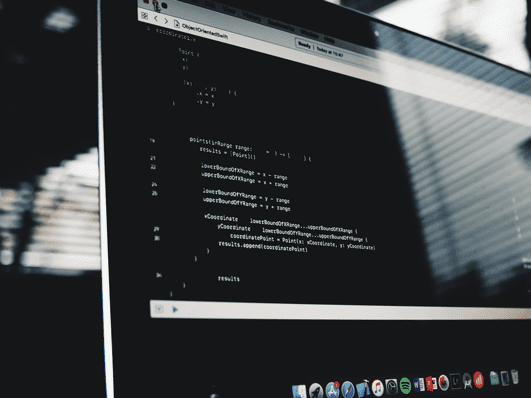Discover how Myra combines digital sovereignty and cyber resilience.
Home>
Cybersecurity
01
Cybersecurity: A Definition
Cybersecurity, also known as IT security, is the set of measures, technologies, and practices used to protect computers, networks, programs, and data from unauthorized access, theft, damage, or disruption. The aim is to ensure the confidentiality, integrity, and availability of information. Considering the growing threats and increasing complexity of cyber attacks, it is becoming increasingly important to deal with effective cybersecurity solutions and the best cybersecurity companies.
03
The Evolution of Cybersecurity
The development of cybersecurity is closely linked to the evolution of information technology. In the early days of the computer era, the need for security measures was minimal. This changed dramatically with the advent of the internet in the 1990s. Initially, cybersecurity focused on protection against viruses and malware but attacks became increasingly sophisticated. In the 2000s, awareness emerged that security strategies require multi-layered approaches that consider technical, organizational and human aspects.
With the advent of cloud computing, IoT and mobile devices in the 2010s, the attack surface became larger. Cybersecurity strategies had to evolve accordingly. Modern approaches now include advanced threat analysis, AI to detect anomalies and comprehensive incident response plans. Today, cybersecurity is an integral part of almost every organization's IT infrastructure and requires continuous adaptation to ever-changing technologies and threats.
04
Types of Cyberattacks and Threats
Cyberattacks and threats are constantly increasing and becoming more sophisticated, making security in the digital space a pressing challenge for businesses, governments, and individuals. Different types of cyberattacks target different vulnerabilities and can cause significant financial, reputational and operational damage. An in-depth understanding of the different types of threats is critical to implementing effective protective measures and defending against the diverse attack vectors. Below are some of the most common and dangerous types of cyberattacks, including malware, phishing, SQL injections and DDoS attacks.
DDoS attacks
Distributed Denial of Service (DDoS) attacks aim to impair the availability of online services. Attackers flood servers and networks with a massive amount of data traffic so that legitimate requests can no longer be processed. As a result, websites and services are no longer accessible. DDoS attacks without DDoS protection can cause significant financial losses and reputational damage, especially for companies that rely heavily on their online presence.
Malware
Malware includes various malicious software types, including viruses, worms, and Trojans. These programs infect computers and networks to cause damage or take control of devices. Malware can be used to steal confidential data, destroy systems or misuse resources for criminal purposes. It is often spread via infected attachments in emails, infected websites or unsafe downloads.
Phishing
Phishing attacks aim to trick users into revealing sensitive information such as passwords, credit card numbers or social security numbers. Attackers send deceptively real-looking emails or create fake websites that resemble trusted sources. Once the user clicks on a link or enters information, it is intercepted and misused by the attacker. Phishing is one of the most common methods used to steal personal and financial data.
SQL injections
SQL injections exploit vulnerabilities in database management by injecting malicious SQL commands into form submissions. These attacks allow attackers to gain unauthorized access to databases, manipulate or delete data. SQL injections can cause significant security vulnerabilities, especially in poorly secured web applications, and are one of the most dangerous types of cyberattacks on databases.
Firewalls and Intrusion Detection Systems (IDS)
A fundamental component of many cybersecurity solutions is the implementation of firewalls and intrusion detection systems (IDS). Firewalls monitor and control data traffic between an internal network and external sources to prevent unauthorized access. IDS complement these measures by detecting suspicious activity within the network and raising the alarm before damage can occur.
Antivirus software and endpoint protection
Antivirus software is one of the essential cybersecurity solutions and protects devices against malware, including viruses, trojans, and ransomware. In addition, endpoint protection solutions offer comprehensive protection for all end devices in a network by continuously searching for and neutralizing threats.
Encryption of sensitive information
Encrypting data is an effective strategy to ensure that sensitive information remains protected even in the event of an attack. Cybersecurity solutions that use strong encryption algorithms can protect data both in transit and at rest, maintaining confidentiality and integrity.
Multi-factor authentication (MFA)
Multi-Factor Authentication is one of the most effective cybersecurity solutions for securing user accounts. In addition to the password, MFA requires an additional authentication method, such as a one-time code via SMS or biometric verification, to further secure access to sensitive systems.
Security Information and Event Management (SIEM)
SIEM systems combine various cybersecurity solutions to collect, analyze and correlate security data in real time. This enables a holistic view of the security situation and helps to detect and respond to threats at an early stage. SIEM solutions are particularly valuable for large organizations with complex IT infrastructures.
Raising employee awareness
The human component is often the weak point in any security strategy. Effective cybersecurity solutions therefore also include employee training and awareness. Through regular training, employees can be informed about current threats and best practices, which significantly reduces the risk of social engineering and phishing attacks.
Cybersecurity Solutions by Myra

DDoS Protection
Myra DDoS Protection provides you with fully automatic protection against malicious requests and overload attacks. Even in the event of an imminent attack, your web applications stay available at all times.

Hyperscale WAF
The Myra Hyperscale WAF protects your web applications against malicious access and vulnerability exploits. Thanks to simple integration and configuration, it can be set up in no time at all.

CDN
First-class user experience thanks to fast page loading and minimal latency: With the Myra High Performance CDN, all static and dynamic content on your website is delivered with high performance.
Secure DNS
Myra Secure DNS offers you a reliable and powerful solution for securing your critical web applications. Manage your name resolution with ease and protect yourself against DNS hijacking.

Deep Bot Management
Say goodbye to malicious bots forever. Myra Deep Bot Management creates unique fingerprints for each bot and thus enables an optimal response to every request.
Certificate Management
No more problems with expired SSL/TLS certificates. Increase the security of your digital assets with Myra Certificate Management and encrypt all your domains automatically.
07
The Future of Cyber Security
The future of cybersecurity is characterized by rapid technological developments and constantly evolving threats. Companies and individuals need to be proactive to ensure their systems and data are protected. Important trends and technological developments in cyber security include:
Artificial intelligence (AI) and machine learning (ML) are revolutionizing cybersecurity by providing the ability to detect and respond to threats faster and more accurately. Here are some of the most important applications of AI and ML in cybersecurity:
Anomaly detection: AI-powered systems can learn normal user behavior and detect anomalies that indicate potential security incidents. This enables faster detection and response to threats.
Automated threat detection: Through machine learning, security solutions can analyze large amounts of data and identify patterns that indicate cyberattacks. This reduces the time it takes to detect and combat threats.
Phishing detection: AI can identify phishing emails better than traditional methods by analyzing text content, links, and senders.
Threat prediction: ML models can use historical data to predict future threats and enable proactive security measures.
Zero Trust architectures are based on the principle that no user or device, regardless of their location inside or outside the network, is automatically trusted. All access must be continuously checked. The main components of Zero Trust are:
Strict access controls: Users and devices are only granted the minimum necessary access to resources based on their identity and current state.
Continuous auditing: Access requests are continuously reviewed and every interaction is verified to ensure it is legitimate.
Network segmentation: Networks are divided into smaller segments to prevent the spread of threats. This further restricts access to sensitive data and systems.
Encryption: All data transmitted inside and outside the network is encrypted to ensure security.
Overall, the future of cybersecurity offers both challenges and opportunities. Companies that are willing to invest in new technologies and continually update their security strategies will be better able to protect themselves against the ever-evolving threats.




